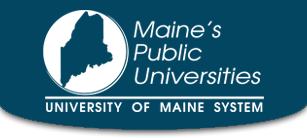Bailey, T., Hughes, K. L., & Karp, M. M. (2002). What role can dual enrollment programs play in easing the transition between high school and postsecondary education? : Columbia University. Retrieved from http://ccrc.tc.columbia.edu/media/k2/attachments/dual-enrollment-easing-transitions.pdf.
Bautsch, B. (2011). Improving college completion: Reforming remedial education. Washington, DC: National Conference of State Legislatures. Retrieved from http://www.ncsl.org/documents/educ/ReformingRemedialEd.pdf.
Bautsch, B. (2014). The Effects of Concurrent Enrollment on the College-Going and Remedial Education Rates of Colorado’s High School Students Denver, Co: Colorado Department of Education.
Berger, A., Turk-Bicakci, L., Garet, M., Knudson, J., & Hoshen, G. (2014). Early College, Continued Success, Early College High School Initiative impact Study. Washington, DC: American Institutes for Research. Retrieved from https://http://www.air.org/resource/early-college-continued-success-early-college-high-school-initiative-impact-study-2014.
Harnish, D., & Lynch, R. L. (2005). Secondary to postsecondary technical education transitions: An exploratory study of dual enrollment in Georgia. Career and Technical Education Research, 30(3), 169-188.
Hoffman, N. (2005). Add and subtract: Dual enrollment as a state strategy to increase postsecondary success for underrepresented students. Boston, MA: Jobs for the Future.
Hubbard, A. L. (2016). Exploring the Liminal Space: Dual Enrollment at Maine’s Community Colleges. (Doctoral Dissertation), University of Maine, Orono, Mane.
Johnson, T., & Brophy, M. (2006). Dual enrollment: Measuring factors for rural high school student participation. The Rural Educator, 28(1), 25-32.
Karp, M. M., Calcagno, J. C., Hughes, K. L., Jeong, D. W., & Bailey, T. R. (2007). The postsecondary achievement of participants in dual enrollment: An analysis of student outcomes in two states. St. Paul, Minnesota: Columbia University. Retrieved from http://ccrc.tc.columbia.edu/media/k2/attachments/dual-enrollment-student-outcomes.pdf.
Kena, G., Musu-Gilette, L., Robinson, J., Wang, X., Rathbun, A., Zhang, J., . . . Dunlop Velez, E. (2015). The Condition of Education 2015 (NCES 2015-144). Washington, DC: U.S. Department of Education National Center for Education Statistics. Retrieved from http://nces.ed.gov/pubs2015/2015144.pdf.
Morrison, M. (2008). The strategic value of dual enrollment programs. Techniques (ACTE), 83(7), 26-27.
Plimpton, L. (2007). From high school to college: Removing barriers for Maine students. Portland, ME: Senator George J. Mitchell Scholarship Research Institute. Retrieved from http://mitchellinstitute.org/wp-content/uploads/2014/05/BarrierReport_Web.pdf.
Plimpton, L. (2008). 2008-2009 Early college survey of Maine high schools. Portland, ME: Senator George J. Mitchell Scholarship Research Institute.
Plimpton, L. (2011). Early college policies and participation at Maine high schools. Portland, ME: Senator George J. Mitchell Scholarship Research Institute.
Pour, M. (2016, February 25). Three ways to create access through K-12 dual-enrollment, Online, The Evolllution.
Smith, D. (2007). Why expand dual-credit programs? . Community College Journal of Research and Practice, 31, 371-387. doi: 10.1080.106689206000932884
Swanson, J. (2008). An analysis of the impact of high school dual enrollment course participation on post-secondary academic success, persistence, and degree completion. Paper presented at the National Alliance of Concurrent Enrollment Partnerships, Kansas City, MO.
Webb, M., & Gerwin, C. (2014). Early College Expansion: Propelling Students to Postsecondary Success, At a School Near You. Boston, MA: Jobs for the Future.
